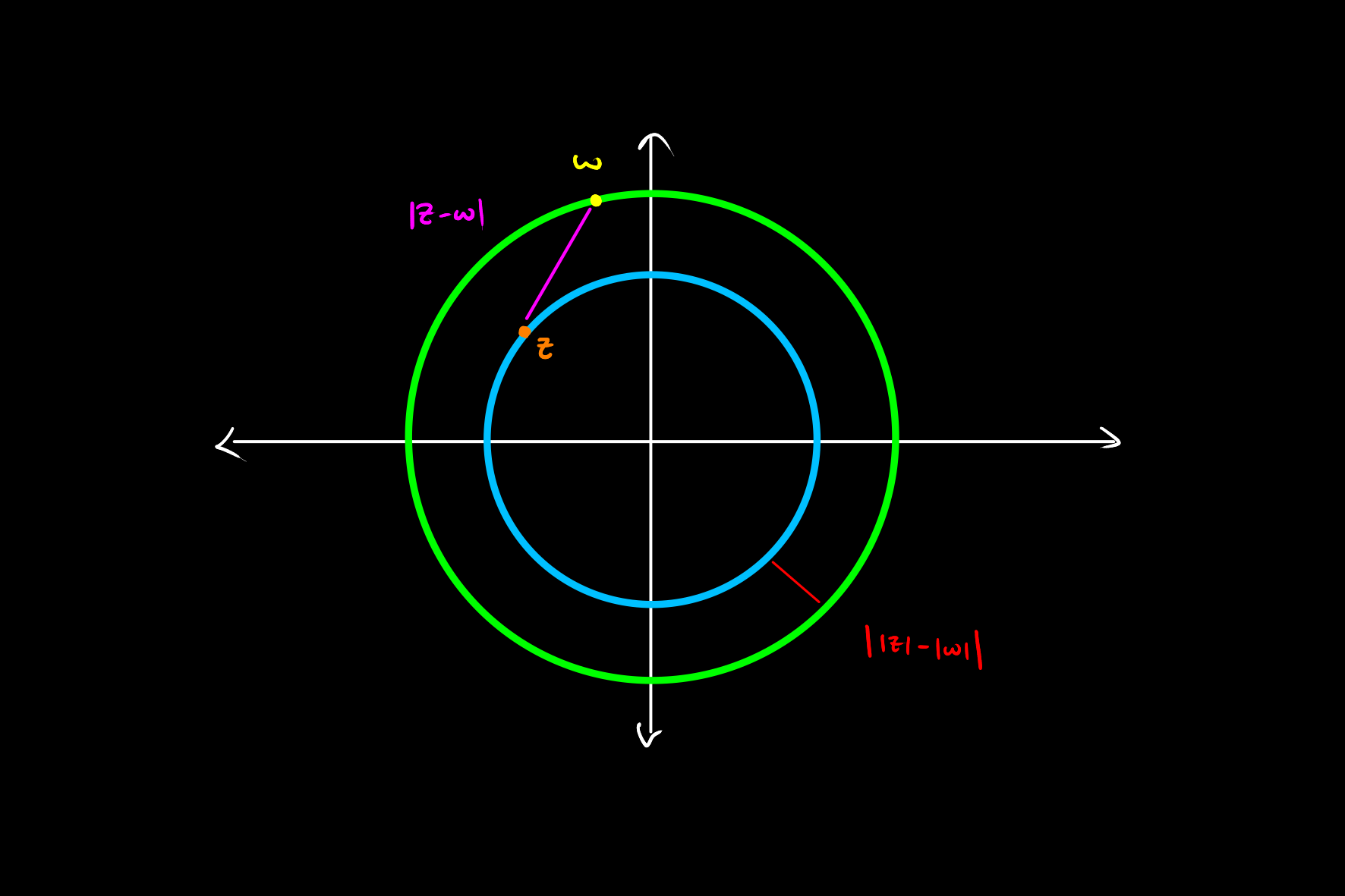Reverse Triangle Inequality
The reverse triangle inequality, sometimes called the circle inequality (see below) is a simple consequence of the triangle inequality.
For any
Proof
We first consider the norm of
This implies that:
Since
Combining these results we have the desired inequality:
Geometric Intuition
This inequality is also sometimes called the circle inequality due to the below interpretation in
Given two complex numbers
